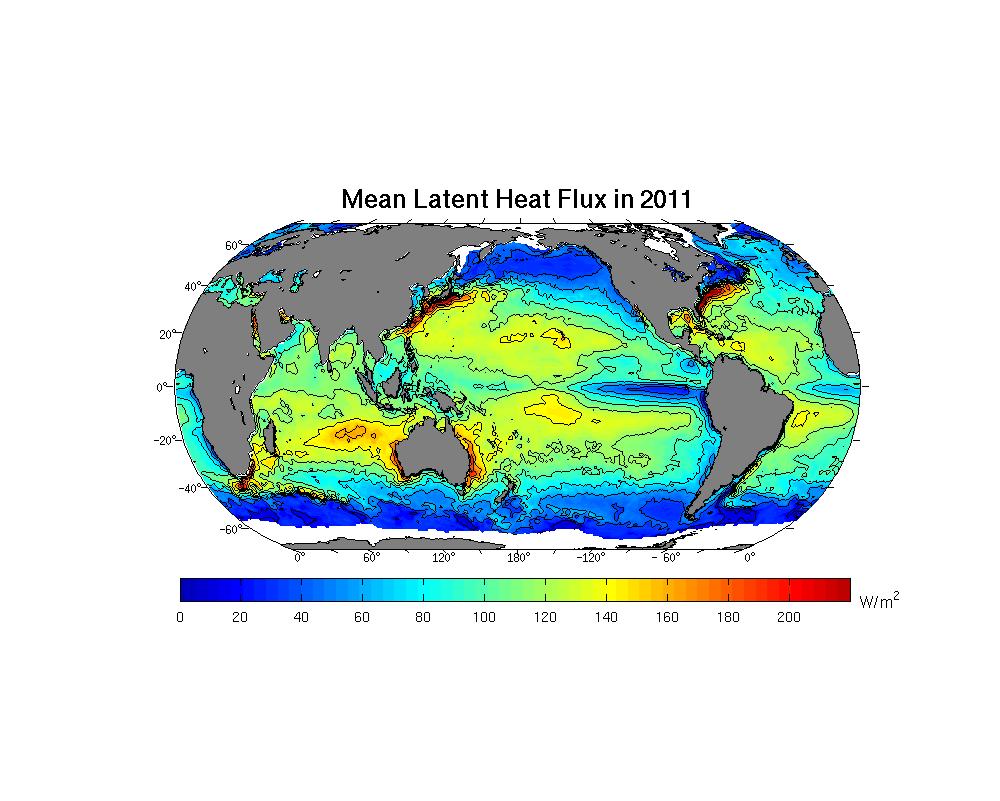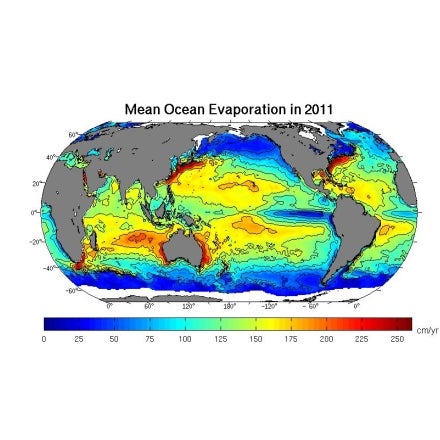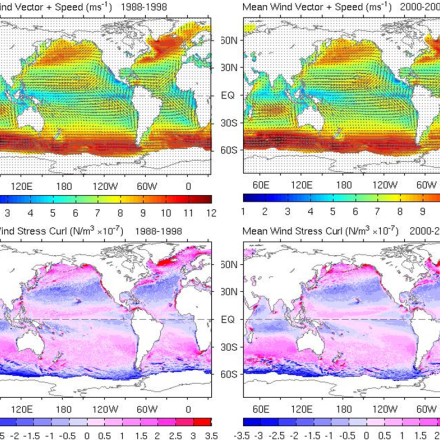OAFlux: Objectively Analyzed air-sea Fluxes for the global oceans.

"The OAFlux project aims to provide consistent, multi-decade, global analysis of air-sea heat, freshwater (evaporation), and momentum fluxes for use in studies of global energy budget, water cycle, atmosphere and ocean circulation, and climate. The OAFlux project is so called because it applies objective analysis approach to take into account data errors in the development of enhanced global flux fields. The objective analysis denotes the process of synthesizing measurements/estimates from various sources. Such process reduces error in each input data source and produces an estimate that has the minimum error variance. The OAFlux project uses the objective analysis to obtain optimal estimates of flux-related surface meteorology and then computes the global fluxes by using the state-of-the-art bulk flux parameterizations. "(http://oaflux.whoi.edu/index.html) The OAFlux products are created from an optimal blending of satellite retrievals and three atmospheric analyses.
Key Strengths
Cite this page
Acknowledgement of any material taken from or knowledge gained from this page is appreciated:
National Center for Atmospheric Research Staff (Eds). Last modified "The Climate Data Guide: OAFlux: Objectively Analyzed air-sea Fluxes for the global oceans..” Retrieved from https://climatedataguide.ucar.edu/climate-data/oaflux-objectively-analyzed-air-sea-fluxes-global-oceans on 2025-12-31.
Citation of datasets is separate and should be done according to the data providers' instructions. If known to us, data citation instructions are given in the Data Access section, above.
Acknowledgement of the Climate Data Guide project is also appreciated:
Schneider, D. P., C. Deser, J. Fasullo, and K. E. Trenberth, 2013: Climate Data Guide Spurs Discovery and Understanding. Eos Trans. AGU, 94, 121–122, https://doi.org/10.1002/2013eo130001
Key Figures

OAFlux: annual mean latent heat flux for 2011. (http://oaflux.whoi.edu/heatflux.html)

OAFlux: annual mean sensible heat flux for 2011. (http://oaflux.whoi.edu/heatflux.html)

OAFlux: annual mean evaporation for 2011. (http://oaflux.whoi.edu/heatflux.html)

OAFlux: Sample of the yet to be released wind derived products. The figure shows mean winds and winn stress curl for 2 periods. (http://oaflux.whoi.edu/heatflux.html)
Other Information
- Yu, L., X. Jin, and R. A. Weller, 2008: Multidecade Global Flux Datasets from the Objectively Analyzed Air-sea Fluxes (OAFlux) Project: Latent and sensible heat fluxes, ocean evaporation, and related surface meteorological variables. Woods Hole Oceanograp
- Yu, L., and R. A. Weller, 2007: Objectively Analyzed air-sea heat Fluxes for the global oce-free oceans (1981–2005). Bull. Ameri. Meteor. Soc., 88, 527–539
- Fairall, C. W., E. F. Bradley, J. E. Hare, A. A. Grachev, and J. B. Edson (2003), Bulk parameterization of air-sea fluxes: Updates and verification for the COARE algorithm, J. Clim., 16, 571–591